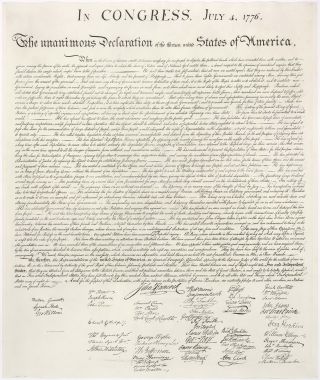Identity
Handwriting, Rebooted
In abandoning script, are we sacrificing a piece of identity?
Posted April 30, 2024 Reviewed by Hara Estroff Marano
Key points
- As handwriting declines, cursive now seems more like a hobby than a utilitarian communication tool.
- How can play help handwriting instruction?
- Learning signatures bolsters identity formation.

Sometimes modest subjects resound loudly with psychological, moral, and cultural overtones. Judging from the response to prior posts, such is the case with the history of handwriting.
So first, a little background.
From Art to Industry
Penmanship masters of the early and mid-19th century, the tutors who celebrated a looping, elaborate, personalized calligraphy (think of the old-fashioned style of the original Coca Cola logo), laid claim to the moral virtues of handwriting. As the cultural historian Tamara Plakins Thornton notes, it was typically understood that before gentlemen could aspire to a handsome script, they first needed to conquer “base, physical appetites.” Learning this useful skill demanded self-mastery.
But by the later 19th-century fancy handwriting gave way to fluent, simpler, less artful but more practical connected scripts. These techniques, taught at the flourishing primary schools of the day, catered to a growing, literate middle class and served the demands of a booming American economy. This innovation had staying-power. In the 20th century, American students still drilled with one of these techniques, the Palmer Method..
Alongside legibility and uniformity, new handwriting systems offered fluency. Because the new style connected one letter to the next, the scribe needed to lift his pen only between words. This saved time. Time was money. Artistry yielded to practicality. This “fast, mercantile hand,” Thornton calls it, flowed at speed in the production of urgent and voluminous business correspondence.
With the introduction of the typewriter in the later 19th century, women took the lead in commercial communication. Because writing by hand could not match the speedy machine, the technology “deskilled” the male profession of scribe and displaced skilled scriveners. The typewriting machine’s operator, herself, was called a “typewriter.” The machine became the occupation. Her output, formal correspondence, while impersonal, became more uniform and readable.
In the process, typists themselves became more interchangeable. If the typewriter were to rise from her desk with a sheet of company stationery rolled in and the last sentence half-completed, none who read the finished letter could guess that another had finished the task.
Computer-assisted “word processing,” of the later 20th century quickened the transition from art to industry. We now reap the practical benefits. The desktop computer has speeded composition significantly by enabling copy, cut, and paste. Accuracy improved—programs automatically correct teh to the, for example, or substitute consensus for concencus. Built-in thesauri fight redundancy with easy synonym-swapping. Programs permit storage for review and revision. Most of us who write now find it hard to imagine operating without these advantages.
The Moments We Have Lost
As handwriting gave way, we have lost more than aesthetic pleasure. Using a quill or a fountain pen demanded meticulous attention. Speedy keyboardists no longer need to ritually blot the ink or wait for it to dry. But writers lost an interval of contemplation. If writing by hand encouraged mindfulness, keyboarding risks distraction.
Readers Respond
Pro:
Richard Korsmeyer, a biochemist who specializes in polymer science, wrote in this vein to say that “regarding play: I find writing by hand…very relaxing. Watching a rich ink flow out of well-tuned nib onto just the right paper can be mesmerizing.” He finds note-taking with a fountain pen stickier in the memory, too.
John Whitney, an engineer, observes that handwriting survived the typewriter because of its “ease, portability, and speed,” especially “in the era when shorthand was commonly practiced.” But he is not happy about a successor technology, the ballpoint pen. The continual pressure that the ballpoint pen demands tires right-handers, he explains, but exhausts lefties like himself. The fountain pen allows a lighter touch, which lets him to hold his hand “comfortably below the plane of writing.” Which in turn allows him “for the first time in [his] life” to see pen strokes clearly, “the same way a right-handed person can.” Like Korsmeyer, he finds that the “extra care in using a fountain pen,” and the process of letting the ink dry or using an old-fashioned rocker blotter, brings a “surprising comfort and even gravity” to composition.
Penny Wilson, a British artist, author, witty pen-and-ink cartoonist, and playworker, wrote to say that handwriting is “an extension of the self.” She has found proof in rediscovering the messages on half-century old birthday cards. The writers of the “silly poems they composed are suddenly there with me as real and detailed as can be. I can see the hands that held the pen that made the marks.” When, during the pandemic, she teamed up with her brother (an animator) to illustrate a recipe for beetroot curry, he decided to turn her own distinctive script into a new electronic font, proving also that what goes around can come around.
… and Con
Mel Johansson, a retired educator, recalls how teachers gave her abysmal grades in handwriting. But it wasn’t for lack of trying. Citing the resurgence of handwriting instruction in half the American states, she calculates the time spent in handwriting instruction—twenty minutes per day (conservatively figured) times 180 days per school year equals 3,600 minutes for each. She laments that the time "wasted" could be better spent in enrichment like art and music appreciation. Long after the compulsory grammar school drills succeeded or failed, she reports that most of her cohort has resorted to a “kind of connected print.”
Mark Vitou, a veteran litigator and amateur cartoonist, observes, “until and unless the human race develops telepathic powers or masters the Vulcan mind-meld, non-vocal communication will primarily be generated by a keyboard.” He adds that “handwriting will be reserved for signatures and little else.” Penmanship drills were lost on him (as for me), despite the best efforts of the “watchful” Dominican sisters who tried to convert his “resilient scrawl” into “a legible string of elegant loops and perfect ovals.”
Art to the Rescue
Claire Treadwell, director of the innovative preschool at the University of Nevada, Las Vegas, recalls her own experience teaching second graders. During “an enjoyable time to relax,” her students explored the “artistic form” with different pens in different colors as classical music played in the background. Relieved of pressure in this generous atmosphere, the lucky kids learned to write their signatures and “celebrate a commanding ownership of their names” as an enjoyable, playful, interlude.
Mark Vitou supplies a conclusion: "Cursive is dead,” he writes, “long live calligraphy.”
References
Tamara Plakins Thornton, Handwriting in America: A Cultural History (1998).




